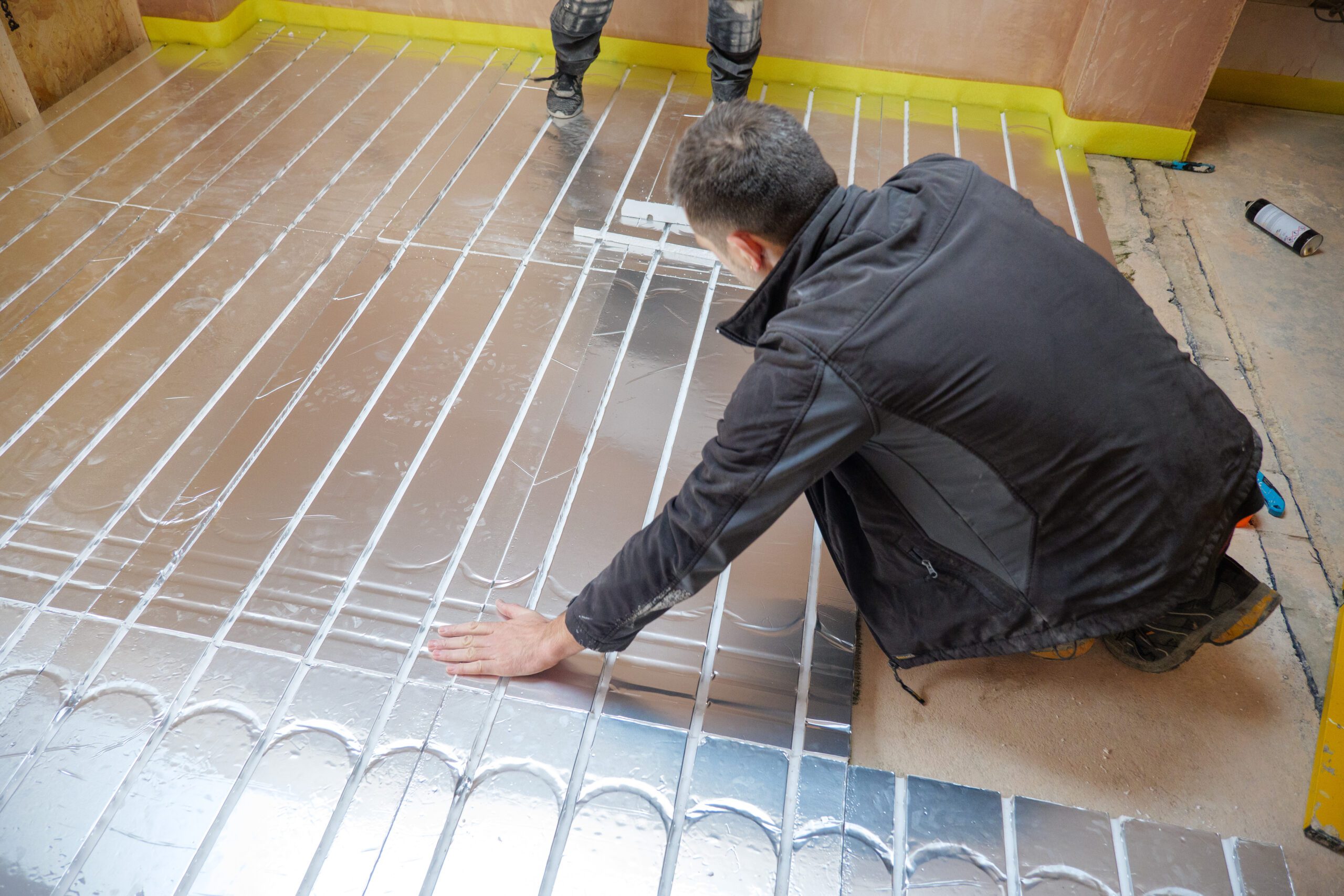Call Us Now ON: 07308140715
Traditional underfloor heating is a time-tested solution that combines efficiency, comfort, and minimal visual intrusion. This system uses warm water pumped through a network of pipes embedded in a screed layer — the concrete or anhydrite flooring material that sits just beneath your floor finish. It's a future-ready way to heat your home that's already proven its worth in thousands of British households.

Unlike radiators, which create hot spots and rely on convection currents, underfloor heating provides even, radiant warmth from the ground up. It's invisible, efficient, and luxurious underfoot — especially in colder months. Whether you're designing a new home or retrofitting a renovation, traditional wet systems offer unrivaled thermal performance when installed with a proper screed base.
This type of system is ideally suited to new builds, extensions, and whole-floor renovations where a new screed can be laid. It performs exceptionally well under a wide range of floor finishes, including:
Traditional systems require a minimum build-up height (usually 50–75mm screed depth), so they’re best installed during early phases of construction or refurbishment. When paired with high-quality insulation boards and correctly zoned controls, this heating method delivers quiet, gentle heat that’s incredibly comfortable and energy-conscious.
With rising energy costs and increased focus on sustainability, traditional screeded underfloor heating is no longer a luxury — it’s a smart investment. Not only does it support low-carbon heating strategies, but it also integrates beautifully with modern smart home technology.
Expect consistent warmth, reduced heating bills, and a clean interior aesthetic. For homeowners and developers alike, this system is a long-term solution that adds tangible value to your property while supporting future-ready, eco-conscious living.